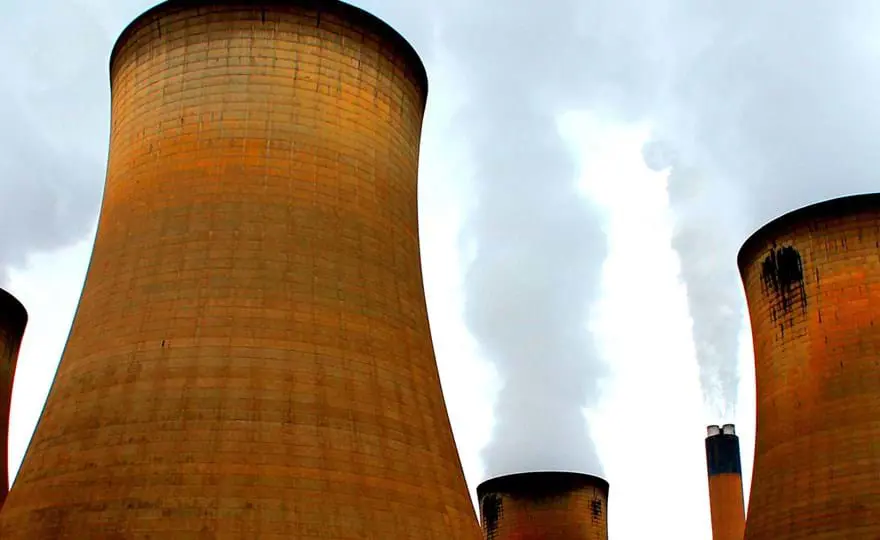ClientEarth Communications
21st January 2021


The UK Court of Appeal has upheld the planning approval for energy company Drax to build what would be Europe’s largest gas power plant at its site in North Yorkshire.
We first took the UK Government to court over the decision to approve the plant in November 2019. We argued that the Secretary of State’s approval was unlawful, based on a misunderstanding of energy planning policies and a misapplication of the planning act.
After a disappointing judgment from the High Court, we took the case to the Court of Appeal in November.
Despite today's ruling upholding the approval, the judgment has set an important and much improved legal precedent for assessing major energy projects on their climate impact.
Climate win as Drax scraps mega gas plant in UK
Drax’s application was to build a 3.6GW gas mega plant at its site in Selby, which risked locking in significant greenhouse gas emissions for decades to come.
Government forecasts at the time estimated that the UK would need just 6GW of new gas generation to 2035. It has already approved 15GW-worth of large-scale gas plants. Approving Drax’s project took total planned gas capacity to 18GW – three times the Government’s estimates of what was needed.
Our assessment of the plant’s climate impact found that the project could create 400% more greenhouse gas emissions than if it were not built.
In June 2019, the UK set a target of reaching net zero greenhouse gas emissions by 2050. Another large-scale gas plant would be at odds with the roll out of rapid decarbonisation.
The UK’s planning authority agreed with us and recommended the project be refused permission, stating that the climate impacts outweighed any benefits, even before taking account of the net zero target. But the Secretary of State went against this recommendation and approved the project.
In the Court of Appeal in November, lawyers acting for ClientEarth argued the Government failed to properly assess the climate impact of Drax’s proposed 3.6GW gas plant, and the need for the project, in line with its own planning policies and recommendations.
One of the key objectives of the Government’s planning policies is to avoid projects that risk locking in unnecessary greenhouse gas emissions for decades to come.
We argued that the way the Secretary of State interpreted these policies is stopping projects from being refused on that basis, and believed that approach to be unlawful.
This week, the Court endorsed ClientEarth’s key arguments and set some important legal precedents.
The judgment confirms that decision-makers must consider a project’s carbon lock-in risk, that they can refuse permission on the basis of climate impacts, and that the public can raise these issues in planning inquiries.
The Court also ruled that the national need for every project must be assessed, and that assessment must be forward looking and ‘grounded in reality’.
ClientEarth lawyer Sam Hunter Jones said: “This ruling sets an important precedent: major energy projects in the UK can be rejected on climate change grounds, and the Government must consider the carbon lock-in risk of each project.
“Following this judgment, decision-makers must now stop hiding behind planning policy to justify business-as-usual approvals of highly polluting projects. They need to engage with reality and take ownership of decisions that could make or break whether we achieve our long-term climate targets.
“The Secretary of State’s decision still stands and that’s problematic of course, but we believe that the judgment brings vital clarity to the meaning of national planning policy.”
And if the Secretary of State did understand that she needed to consider the project’s carbon lock-in risk and could refuse consent on that basis, then that exposes a clear failure to reckon with what the net zero target means for the power sector and to engage with the findings of the Government’s own planning authority regarding the project’s unacceptable carbon lock-in risk.
The clarity brought by the judgment establishes a sound starting point for improving energy planning policies, in the upcoming National Policy Statements review.
Policies should be improved to take account of the net zero target and to avoid any possible risk of the Secretary of State’s approach in this case being replicated in other decisions.
The judgment also confirms the ability of decision makers across all major infrastructure planning to take account of changes in circumstances since the issuing of policy under the Planning Act 2008, with possible implications for other infrastructure projects outside of the energy context.
It is now up to the company to revisit its plans after the UK climate authority’s latest net zero recommendations, as well as recent data showing demand for gas in the UK continuing to be displaced by renewables.
“The climate and business case for large-scale gas power has only got worse since the Planning Inspectorate recommended Drax’s proposals be refused permission,” Hunter Jones added.
“The Climate Change Committee says that to get to net zero the UK needs a completely decarbonised power system by 2035 – that’s more than fifteen years before the end of this project’s expected operating life.”
“Drax also needs to explain how this project squares with its own recent commitment to ‘flexible and renewable’ generation, if indeed it remains interested in taking it forward.”